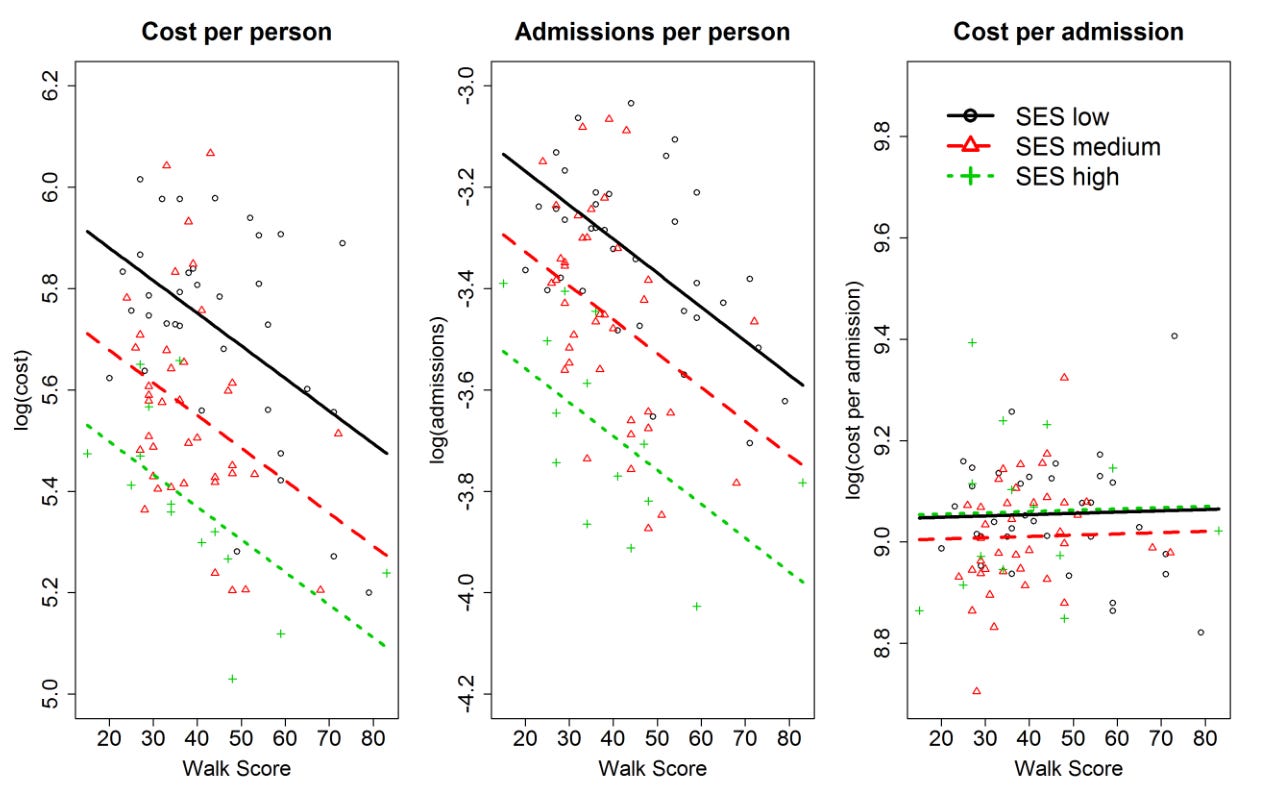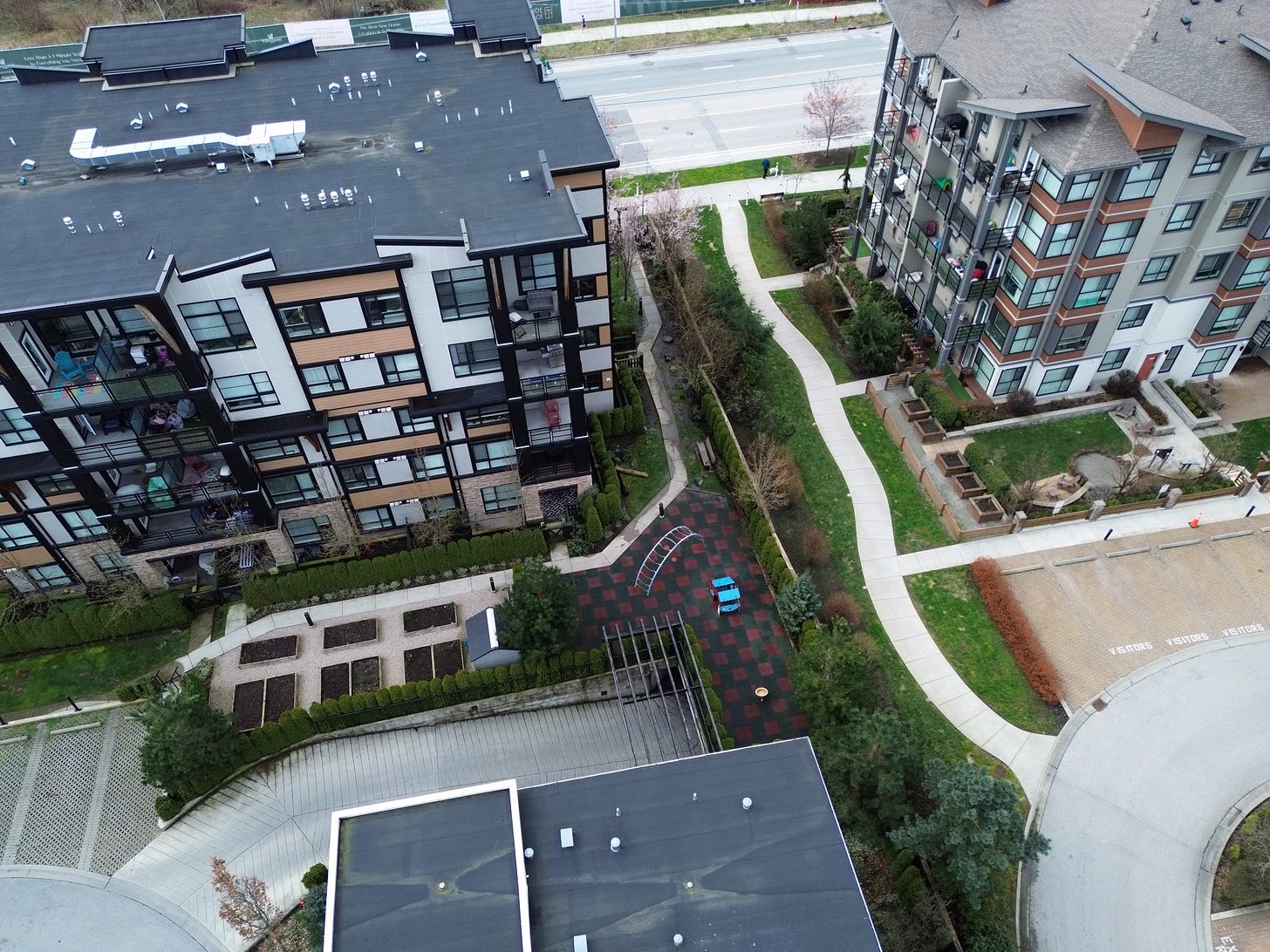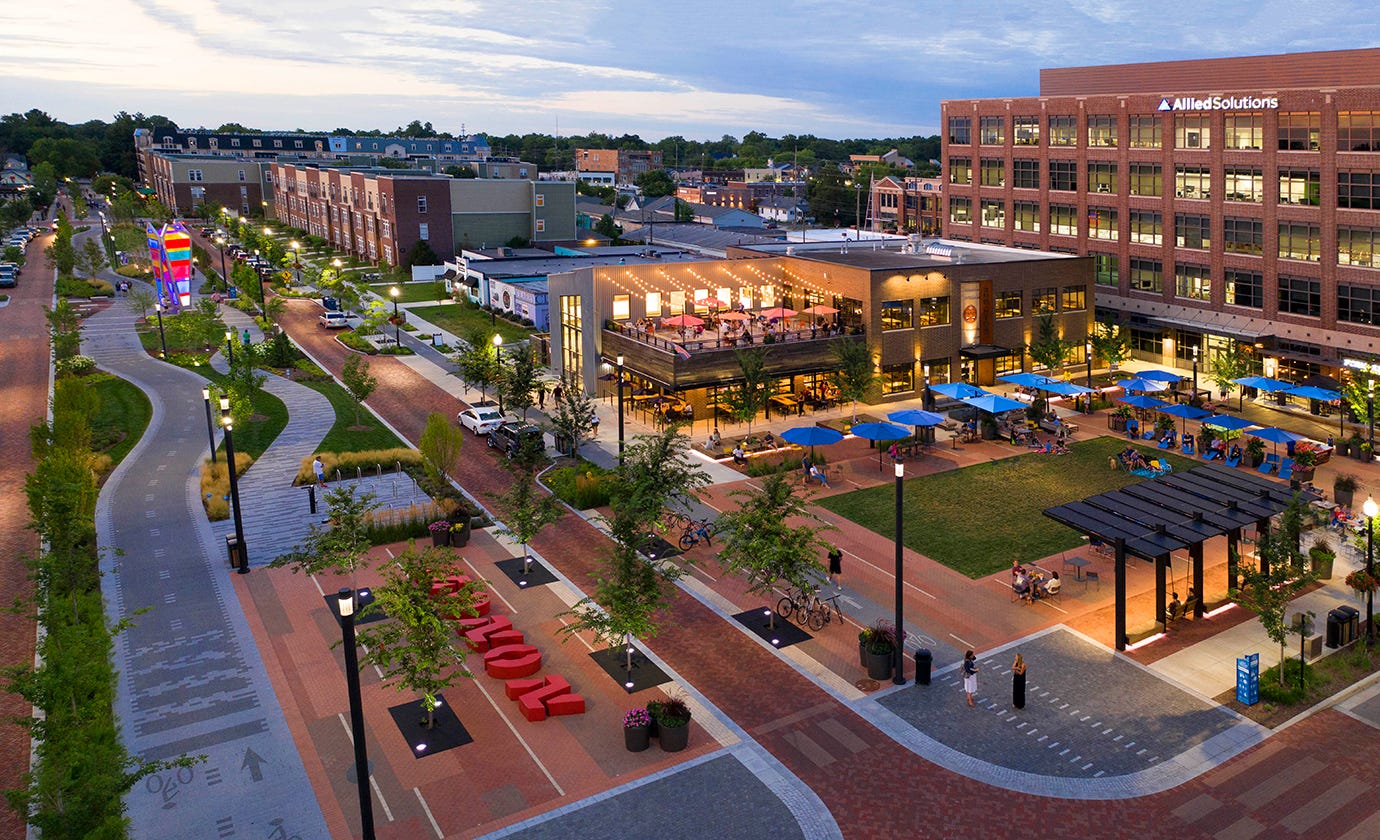Want Shorter Hospital Wait Times? Start With Better Sidewalks
Langley's health crisis isn't just about hospital funding - it's about how we build our community.
If you've been following local news, you know the situation at Langley Memorial Hospital has reached a breaking point. This March, wait times hit 18 hours, with exhausted healthcare workers struggling to keep up with demand.
When situations like this happen, residents naturally look to their elected officials for solutions. The problem? Our municipal politicians don't control healthcare, that’s provincial jurisdiction. They're stuck in an awkward position - they hear your concerns, but they can't add hospital beds or hire more doctors. At the same point in time our local politicians are mandated into building more housing further exacerbating our hospital situation.
What they can control is how we build our community. And that might matter more than you think.
Cars, Cars Everywhere (But Not a Step to Take)
Drive around Langley for a day and you'll notice something - we've built a community where driving isn't just the preferred option, it's practically the only option.
According to the Township's Transportation and Mobility Strategy, 93% of us drive to work. That's not just high - it's among the highest in the entire Lower Mainland.
All this driving means a lot of sitting, and our bodies weren't designed to sit all day. This sedentary lifestyle is linked to obesity and worse physical and mental health, cardiovascular diseases, and even heart attacks. This shows up in our health statistics - the City and Township have some of the highest obesity rates in the region.

The Hospital Connection You Might Not Have Considered
Here's where things get interesting. A 2017 study found that neighbourhoods with a higher WalkScore® (a measure of how walkable an area is) had 12.5% fewer hospital admissions and 12.1% lower hospital costs for every 20 points of WalkScore®.
In Langley Township where the average walkscore is 33 an improvement to match Burnaby’s 60 Average would hypothetically yield a roughly 17% reduction in hospital admissions.
Think about that for a second. Just by designing neighbourhoods where people can and want to walk more, we could potentially reduce pressure on our hospital by over 15%.

We Keep Getting It Wrong
Even when we try to build better, we miss the mark. Look at Latimer Village - we built towers near transit but didn’t build sidewalks to the transit. The village itself is a mixed used development somehow forgot to include crosswalks. People have lived there for years now, and there are still no safe ways to cross 83rd Ave.
The intersection at 208th & 80th has plenty of lanes for cars but remains dangerous for anyone not in a vehicle, stuck in an interim and dangerous state for decades. Instead of treating upgrades to it’s intended state as a transportation issue it should be prioritized as a health and safety issue.
The way townhouse complexes are developed, usually completely independently from one another, means they often fail to capitalize on potential walkability and suffer from redundant infrastructure and artificial barriers between them. The Wex and Wyatt, two adjacent developments on 208th Street and 77th Ave built within the last decade, demonstrate this problem clearly. There is no way to traverse on foot between these complexes directly as a fence lies between them, and instead of a connection both have paths that lead out to 208th Street in parallel.

These design failures stem from a planning approach that prioritizes individual development boundaries over community connectivity. Rather than coordinating to create an integrated network of pathways that could serve all residents more efficiently, developers install duplicate infrastructure within their own property lines. The result is a patchwork of disconnected walkways that force pedestrians to take longer routes and lack organic flow. This inefficiency wastes both land and resources while making walking less convenient for everyone.
This example, and other barriers like it, turn what could be simpler, quieter walks into uncomfortable journeys by pushing people out to walk along busy roadways. What could be a nice walk to Willoughby Town Centre through connected quieter paths and roads is instead a noisier, less pleasant route next to a high-traffic street, ultimately discouraging walking as a transportation choice.
Walking as Preventative Healthcare
Just 30 minutes of walking daily can dramatically improve your health. Walking helps with:
Weight management
Heart health
Diabetes prevention
Mental health
Better sleep
When people walk more regularly, they simply need less medical care. It's not complicated, but we've designed a community that makes this simple health habit unnecessarily difficult.
A study from Australia found that even walking three kilometers three times a week helps with weight management, with associated economic benefits in the millions of dollars, plus improvements to mental health.
Small Changes, Big Impact
Here's what Langley could actually do to help ease hospital wait times:
Stop treating walkability as an afterthought. When a new development comes to council, the first question should be "Can people walk here safely?" not "Is there enough parking?" Council has debated vehicle circulation patterns but never discusses how can pedestrians access the neighbourhood efficiently.
Fix the dangerous walking routes we already have. Every missing sidewalk or unsafe crossing is a barrier to better community health. When capital budgeting staff should consider these deficiencies as impacting the health and safety of the municipality giving it the true weighting it needs to have.
Make developers complete pedestrian infrastructure before people move in. We wouldn't let them skip building parking spaces - why do we let them skip sidewalks and crosswalks?
Encourage more mixed-use development. Having places to walk TO is just as important as having safe places to walk.

Air pollution from traffic has strong correlations with cardiovascular disease, lung cancer and asthma. Reducing car dependency means fewer cars on the road and better air quality for everyone.
Walkable neighbourhoods also support aging in place. Almost all of Langley currently requires a car to survive, which means seniors who can no longer drive can't stay in their homes.
The Bottom Line
When you're stuck waiting 18 hours at Langley Memorial, the last thing on your mind is probably sidewalks and crosswalks. But the evidence suggests that better-designed neighbourhoods could actually help reduce those wait times in the long run.
Our local politicians can't build a new hospital wing or hire more doctors. But they can push for neighbourhoods that keep us healthier in the first place.
If we know walkable communities lead to better health and lower costs, why aren't we building them?

Strong Towns Langley is a community group dedicated to making Langley, British Columbia a better place. We advocate for incremental development, sustainable transportation solutions, housing accessibility, public spaces, and responsible growth strategies. Our group is part of the larger Strong Towns movement, focusing on creating financially resilient and people-oriented communities.
To learn more visit https://strongtownslangley.org








Great stuff as always... I'll be passing this along to our city councilors and planners as well!